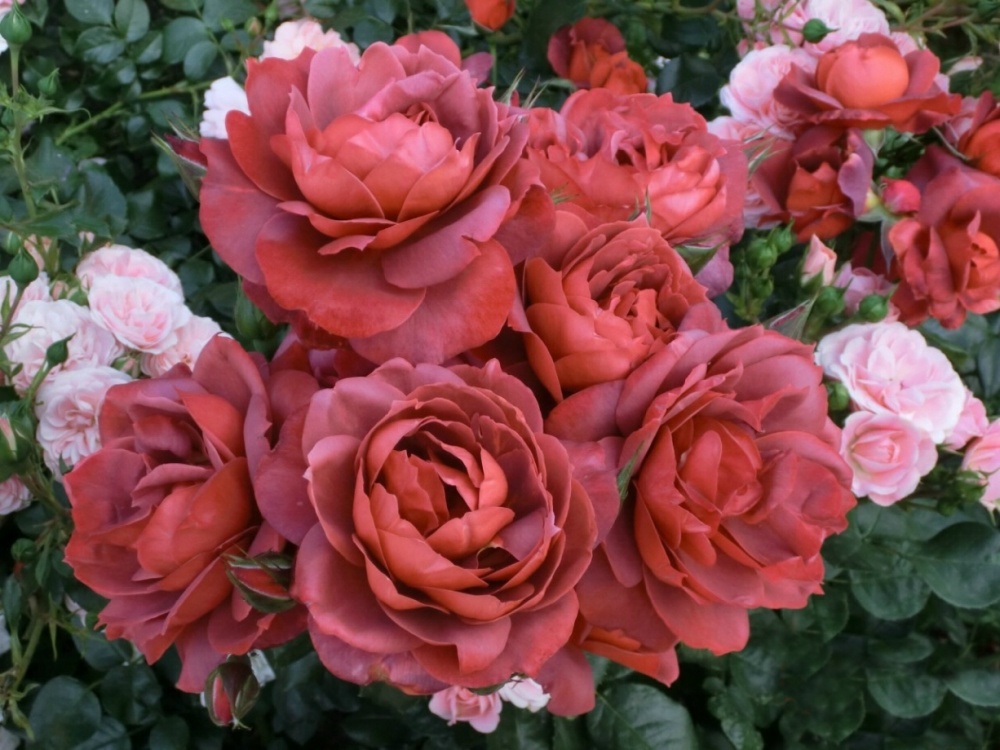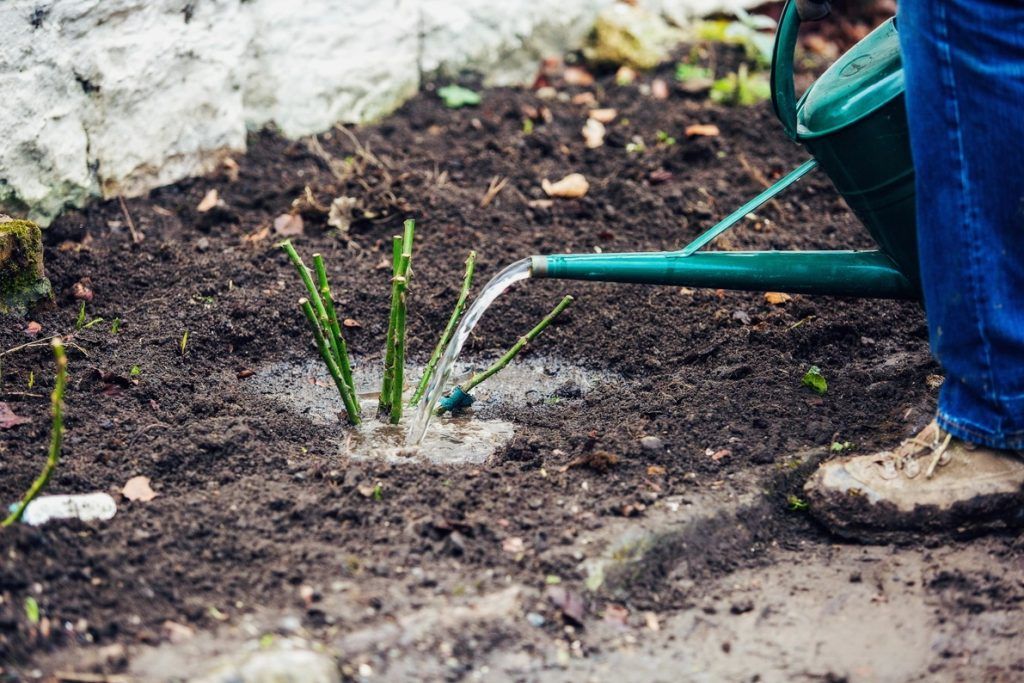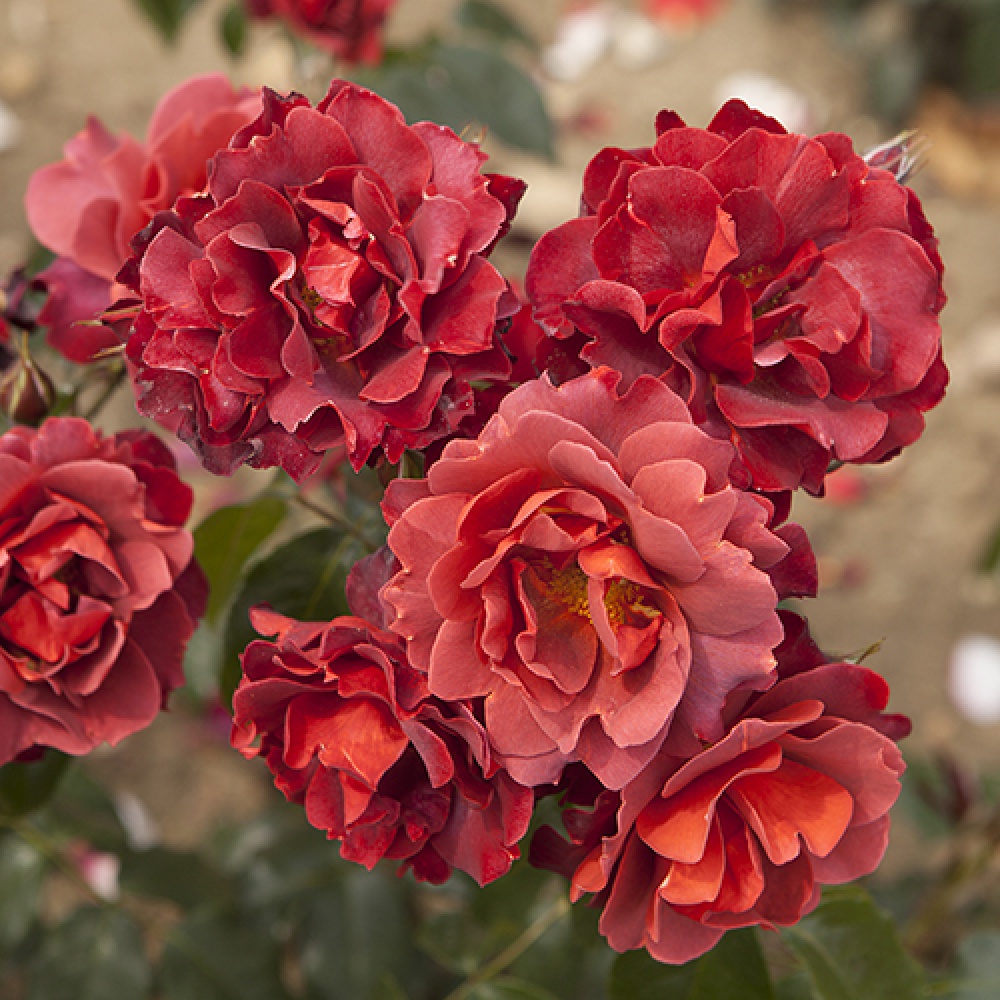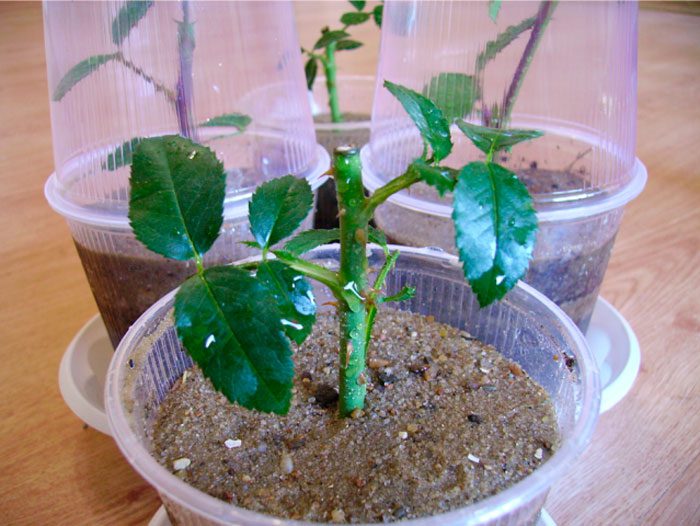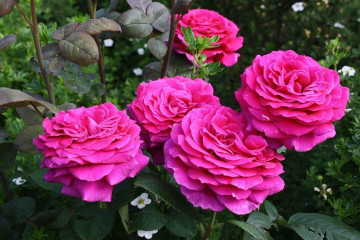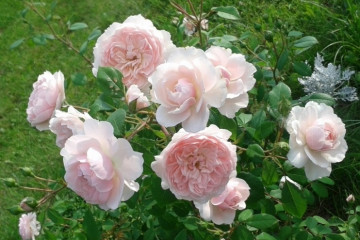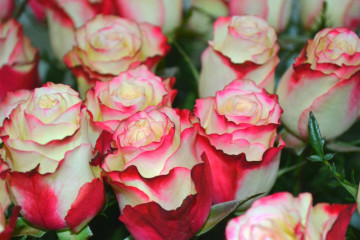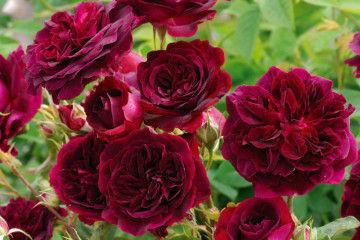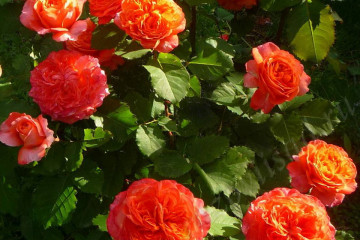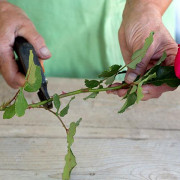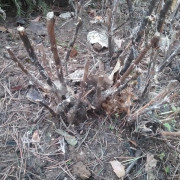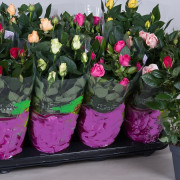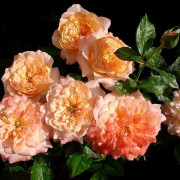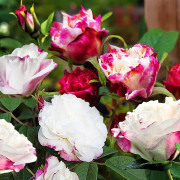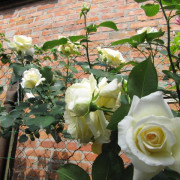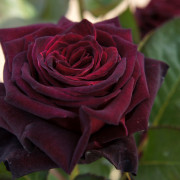Rose Hot chocolate (Hot chocolate) - description of varietal flower
Content:
Rose Hot Chocolate is a popular floribund crop. It is often used to decorate gardens. To achieve success in its cultivation, it is necessary to strictly follow the rules for carrying out planting work and provide comprehensive care.
Rose Hot chocolate - what is this variety, history of creation
Hot Chocolate is a rose that was obtained in 1986 in New Zealand. The variety was created by Nola Simpson, it appeared as a result of crossing tea and polyanthus roses.
Rose Hot Chocolate has beautiful dark green leaves with a glossy texture. It is characterized by a strong stem, which reaches 1-2 m in height. Up to 5 flowers can be present on 1 peduncle.
The buds contain up to 30 petals and form flowers with a diameter of 9 cm. The inflorescence can resemble a cup or glass. The petals have a straight or double shape. Their shades are different - from red to terracotta.
The color range depends on the climatic conditions. In cold weather, the petals turn red. Under the influence of high temperatures, they acquire a terracotta color. In addition to variations in the shade of cocoa, there may be other colors - orange, pink with a white border, pink-red.
It is worth noting that there is another variety - Hot Cocoa rose. It is characterized by smoky and white inflorescences. Due to the similarity of shades, Hot Cocoa is often confused with Hot Chocolate.
Advantages and disadvantages of the variety
Rose Chocolate, as it is sometimes called for short, has many benefits:
- strong immunity;
- resistance to excess moisture;
- frost resistance;
- 2 blooms during the season.
At the same time, the description of the culture also includes certain disadvantages:
- lack of drought tolerance;
- the need for a special shelter.
Use in landscape design
Even in a small area, space can be allocated for this beautiful rose. The flower can be the basis of a flower bed or decorate a mixborder. It looks good in single or group plantings.
Growing a flower, how to plant it in open ground
In order for the cultivation of a crop to be successful, it is necessary to take into account certain features when carrying out planting work.
The plant is recommended to be grown from seedlings. It is important to choose the highest quality planting material without traces of rot or mold.
In the middle lane, the plant is recommended to be planted in spring - in April or May. In the fall, planting in the south is permissible, but all work should be carried out on time so that the plant takes root before the arrival of cold weather.
Location selection, soil and flower preparation
Before carrying out planting work, it is necessary to choose the right site. It should be sunny and sheltered from the wind. It is advisable to place the culture on a hill.
Rose Hot Chocolate requires a neutral to slightly acidic soil. With increased acidity, lime is introduced into the soil and mixed well.It is important to slightly moisten the soil.
In order for the plant to adapt better, it is necessary to trim the roots and shoots. The day before planting, the bush is soaked in a growth stimulant solution.
Planting procedure step by step
To plant a chocolate rose, you need to do the following:
- Make a 50 cm depression.
- Place a 10 cm thick drainage layer on the bottom.
- Pour in water and wait until it is absorbed.
- Apply fertilizer with phosphorus.
- To plant a herb.
- Sprinkle the seedling with soil and compact it slightly.
- Water the bush abundantly.
- Raise the ground to the trunk to get a hill.
- Place a composition based on peat, wood ash, humus around the plant.
Plant care
To achieve the full development of a culture, it needs to be provided with quality care.
- Watering rules and humidity
The plant needs to be watered systematically. It is especially important to do this in the spring. For 1 bush, 10 liters of water should be used. It is recommended to moisten the soil once a week. In hot weather, the procedure is carried out 2 times.
- Top dressing and soil quality
For the normal development of the rose, high-quality feeding is required. Nitrogen agents must be used first. When forming buds, it is required to use products based on potassium and phosphorus. It is necessary to apply fertilizers from 2 years of age.
- Pruning and replanting
To give the plant a neat shape, it is pinched and pruned. This procedure should be carried out all year round. To achieve the renewal of branches, pruning is performed at the beginning of the scale. The buds of the first year plant should be cut before the beginning of August.
- Features of wintering a flower
The plant needs quality preparation for winter. To do this, before the arrival of cold weather, the bush should be covered with a composition based on peat, sand and straw. Before carrying out such procedures, you should cut off the buds, foliage and underdeveloped branches.
Blooming rose
For adult plants, beautiful flowers with an unusual shade are characteristic. They decorate the bushes throughout the season.
The flowering culture lasts from June to October. Moreover, it is continuous. One part of the inflorescences wither, while the second is gaining strength. With the arrival of cold weather, the culture begins a period of rest.
Care during and after flowering
In order for the plant to develop normally and bloom profusely, it must be watered in a timely manner, preventing the earth from drying out. 1 bush needs 1 bucket of water. Moisten the soil every 2-3 days. In addition, the plant must be fed and treated with antifungal agents.
What to do if it does not bloom, possible reasons
If the culture does not form buds, you need to find the cause of the problems. The most common factors include the following:
- plant age - too young or old crop;
- wrong choice of landing site;
- a large number of weeds;
- pest attacks;
- improper pruning;
- violation of the rules for caring for a flower.
Flower propagation
The easiest way to propagate a culture is by cuttings. This is the most affordable method that helps to achieve the desired results.
It is recommended to carry out the procedure after the completion of the formation and lignification of the branches. It is these shoots that are best suited for harvesting cuttings.
Detailed description
To propagate a Hot Chocolate rose by cuttings, you should follow these steps:
- Choose a strong and healthy shrub.It is advisable to give preference to an adult plant.
- Cut off the top of the branch with a pruner. The length of the appendix should be 10-15 cm.
- Cut off excess leaves. In this case, you need to remove the bottom sheet. The rest must be left.
- Place the cutting in a container of water for 1 month. The container should be kept in a room with a temperature of +30 degrees.
- When the root system appears, the plant can be moved to the pot.
It is also permissible to use another method:
- place the stalk in a pre-prepared recess or pot;
- moisten the soil;
- provide greenhouse conditions;
- wait for shoots to form.
Diseases, pests and ways to control them
The plant often suffers from such diseases and parasites:
- Powdery mildew. When a white bloom appears on the leaves, it is recommended to remove the affected fragments. Then the culture is treated with fungicides.
- Spotting. To cope with the disease, it is necessary to remove the damaged fragments of the culture. You should also spray the bush with any means containing copper and sulfur.
- Rust. It is imperative to remove damaged fragments. After that, the bush should be treated with fungicides.
- Rose aphid. The affected elements must be cut off. Then rinse the leaves with soapy water. You can also use Aktara.
- Spider mite. When cobwebs appear on plants, insectoacaricides and acaricides are used.
- Thrips. The bushes must be washed with tar oil and the affected fragments removed. It is also worth treating the plants with Aktara.
This rose is considered an attractive ornamental crop. It is often used in landscape design to decorate flower beds and mixborders. In order for the plant to retain its decorative properties for as long as possible, it needs to be provided with full and high-quality care. It should include timely watering, fertilization, pruning. For the winter, the culture should certainly be covered.
